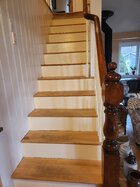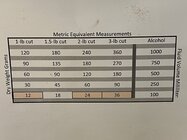From my days working in museum conservation, shellac has always been a mainstay. I mix my own, and prefer it to the premixed, but premixed is less easy to get here than before, and I mostly use it for carpentry stuff like sealing knots. Reasons to mix your own: you can control the colour by choosing the type of shellac, from button lac to super-blonde dewaxed, and you can control the cut/viscosity. With premixed, you can thin it by adding more alcohol, but to make it thicker, you can only do it by adding flakes, and then you're back to square one. Lee Valley is another source to get started; they sell flakes in four colours (two different products), and 1/4. 1/2 and 1 lb packages. Their denatured alcohol (they call it shellac/lacquer thinner) is just fine. For turning, you don't need much, so you could start small if you want and experiment. I LOVE shellac.
ETA except where water or alcohol are a risk, shellac is very under-rated as a finish. This is my stair; I didn't turn the newel, it is an antique, but newel and handrail are done with shellac I mixed. It's been maybe 13+ years of daily use by a family, and it looks brand new. I still have to get around to giving it a final rub-out. If there were any worn areas (there aren't), repairs to shellac are easy and invisible. The treads are NOT done with shellac, and show a lot more wear.
View attachment 63230



